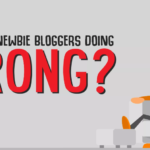While marketers and entrepreneurs continue to use them interchangeably, digital marketing and digital public relations are not the same. There is no doubt that the two share some common traits. Yet, closer observation reveals definite differences in features and functions.
A lot of people say that public relations as an activity have specifically focused on creating awareness and spreading a positive reputation. On the other hand, digital marketing is a more action-oriented activity that seeks to draw tangible results like sales and revenue generation.
In this article, we look at some of the major differences between digital marketing and digital public relations. If you are a marketing professional looking to understand the two, read till the end of the article.
Major Differences between Digital Marketing and Digital Public Relations
In this section, we will list down the three major differences between digital marketing and digital public relations.
- Differences in terms of Channels-
Digital Marketing uses channels like Social Media, Search Engines, PPC Ads, Web Design, and Development among others. On the other hand, Digital PR works with Bloggers, Influencers, Digital Publications, and Publishers.
While the channels might look mutually exclusive, in reality, they are not. This overlapping on the mediums used is often explained in terms of an action and result phenomenon. The results of a successful digital pr strategy start showing on digital channels and platforms.
- Differences in terms of Deliverables-
We briefly dwelled on the nature of differences between the two in terms of the deliverables in the introduction section. This area is where the differences can be tangibly and perceptibly felt. Digital Marketing concerns itself with conversions, followers, and sales.
Digital Public Relations focuses more on the number of publications that the brand has been featured on, impressions, and traffic from the platforms back to the brand website. Here too while the deliverables may seem to overlap, they have distinct functions completely.
- Differences in terms of Investments-
A lot of experts believe that a digital marketing strategy is more expensive as compared to digital pr. To be honest, that is what the market, industry, and professionals have propagated for a very long time. However, the right Digital PR strategy is not as inexpensive as you may think.
For example, if you want to work with the best digital pr consultancy, you need to be prepared to invest in their strategies and vision. As compared to digital marketing, it all depends on the kind of agency you are working with and what are your goals for the business.
The Integration between Digital Marketing and Digital PR
According to experts, there are multiple places where the two functions overlap. In fact, successful case studies have shown how digital marketing can benefit from the right PR strategies and vice versa.
For example, a successful Digital PR strategy can work to reach out to 1000+ publications to carry an article about the brand’s recent announcement of a new product line.
After the article has been carried, the SEO team can reach out to other publishers for guest posting. The publishers are very likely to Google the brand and find all the thousand articles that have already been placed. They will have no issues with working with an established and reputable brand and place the content along with the Do-Follow Links.
Conversely, a social media marketing strategy can open doors for influencers to connect with brands. Following this, the digital marketing team can pass on the contact to the PR team and allow them to sign the influencer on behalf of the brand. This can then be followed by a campaign that the influencer runs for the brand on social media platforms.
The Bottom Line
While digital marketing and public relations are interrelated and integrated disciplines, nevertheless, there exist some stark differences between the two. In this article, we have tried to shed some light on the major differences between the two. If you have any more questions or would like us to discuss some more branding tips with you, let us know in the comments below.




